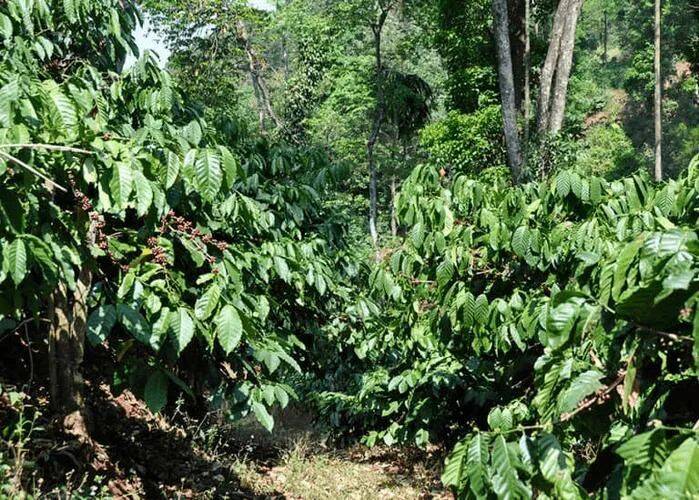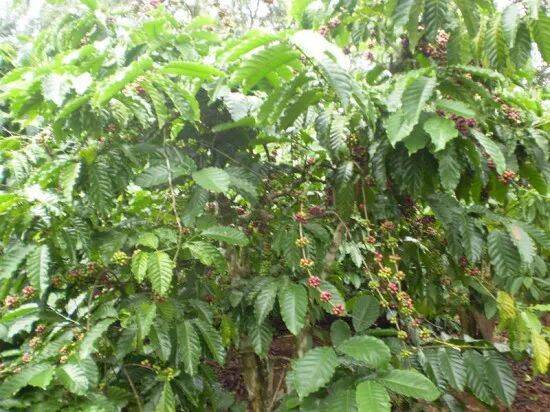Where is Robsta's hometown? Which countries are Robusta mainly produced in?
In the global coffee market, coffee is mainly divided into three major varieties: Arabica, Robusta and Liberica. Under the subdivision of large varieties, there are countless small varieties. At present, the most famous commercial tree varieties are Arabica and Robusta. Arabica accounts for about 60% of the global coffee market, while Robusta accounts for about 40% of the global coffee market.
Robusta can occupy a certain share of the global coffee market because of the characteristics of this variety. Arabica has 44 chromosomes and belongs to self-pollination, while Robusta has only 22 chromosomes, which is cross-pollination, and the caffeine content of Robusta is twice as high as that of Arabica. So Robusta does not have the similar aroma of Arabica varieties, Robusta has a stronger, impact taste, and much more bitter. However, it contains a lot of caffeine and high alcohol thickness, so it is the best choice for most instant coffees. at the same time, this variety is rich in oil, and Robusta coffee is often added to the blending of espresso.
According to records, the Robusta variety was discovered by a Belgian scholar in the African Congo Basin (now the Democratic Republic of the Congo) in 1898. In fact, Robusta belongs to the Coffea canephora species, also known as the Congo species, just as Typica belongs to the Arabica variety, but only one Robusta variety can be commercialized and well known, so now Lobusta has almost replaced Canefra as a synonym for the species. Robusta varieties have the characteristics of high yield, strong insect resistance, disease resistance and strong environmental adaptability, so in many coffee producing countries in the world, many countries grow and export Robusta coffee varieties.
Brazil
Brazil is the world's largest coffee producer and exporter, growing both Arabica and Robusta varieties, of which Arabica is the main export, accounting for 60 per cent of total coffee exports, while Robusta accounts for 40 per cent of total coffee exports. Coffee first entered Brazil in the 18th century, when Arabica varieties were grown, and coffee quickly spread to all parts of Brazil. By the 19th century, Brazilian coffee production accounted for 30% of global coffee production and boosted the Brazilian economy.
In the 20th century, Robusta varieties began to enter Latin America, and commercial cultivation began to spread in many countries in Latin America. However, Arabica varieties are fragile and vulnerable to climate change, so some Brazilian growers have begun to switch to robusta. And Robusta coffee is famous for its drought tolerance, strong disease resistance and adaptability to adverse environment, so it is widely planted in Brazil.
Viet Nam
Vietnam is now the second largest coffee producer and exporter in the world. Unlike Brazil, most of Vietnam's production and exports are robusta coffee varieties. Although Arabica is also grown in northern Vietnam, Arabica varieties account for only 2-3% of Vietnam's coffee production. And, thanks to Robusta's high-yield nature, even though Colombia is about 3.4 times larger than Vietnam, Vietnam produces more coffee than Colombia and can beat Colombia to become the world's second-largest coffee producer.
According to records, coffee was brought to Vietnam by the French in the mid-19th century and was grown in northern Vietnam. It was also an Arabica variety, mainly on plantations at that time. However, at the end of the 19th century, coffee leaf rust was prevalent in Asia and Vietnam was not immune, so production was severely reduced. Until the 20th century, when Vietnam implemented land reform and distributed it to farmers, coupled with the rise in global coffee prices, Vietnam's coffee production increased rapidly, based on the poor disease resistance of early Arabica varieties. Cultivation is dominated by high yields, so most Robusta varieties are planted. At that time, Robusta accounted for half of the total output, and later gradually replaced Arabica as the majority of production and exports.
Indonesia
At present, Indonesia is the fourth largest coffee producer, growing both Arabica and Robusta varieties, which account for 15 per cent of the country's total production and 85 per cent of the country's total production. Indonesia is the largest archipelago country in the world, with mountains and volcanoes, several islands can grow coffee, Arabica is mainly grown in high-altitude mountains, and Robusta is grown in low-lying areas.

As early as the 17th century, Indonesia was a colony of the Netherlands. Due to suitable topography and climate, Arabica coffee was introduced to Indonesia for cultivation. By the beginning of the 18th century, Indonesia exported thousands of pounds of coffee every year. But in the 1860s, coffee leaf rust broke out, destroying coffee production in many coffee-producing countries, and Indonesia was no exception. Later, Indonesia introduced Robusta, which is more resistant and easier to grow, to replace Arabica.
At present, Brazil, Vietnam and Indonesia are the main growers and exporters of Robusta. In addition, Uganda is adjacent to the Democratic Republic of the Congo, so there are native Robusta trees around Lake Victoria in southern Uganda, so the country mainly grows Robusta. There is also the cultivation of Robusta in India, and the launch of the "Coffee Royal" Robusta in India, which belongs to the boutique level, but the number is very rare. In addition, some Asian countries, West Africa and other countries have grown Robusta varieties, and due to the current rise in the price of Robusta coffee, some American countries have also begun to introduce Robusta varieties.

For more information about coffee producing areas, please scan the code directly and follow: coffee comments.
Long press the QR code to follow:
TRANSLATE with
XEnglishArabicHebrewPolishBulgarianHindiPortugueseCatalanHmong DawRomanianChinese SimplifiedHungarianRussianChinese TraditionalIndonesianSlovakCzechItalianSlovenianDanishJapaneseSpanishDutchKlingonSwedishEnglishKoreanThaiEstonianLatvianTurkishFinnishLithuanianUkrainianFrenchMalayUrduGermanMalteseVietnameseGreekNorwegianWelshHaitian CreolePersian
TRANSLATE with
COPY THE URL BELOW
BackEMBED THE SNIPPET BELOW IN YOUR SITE Bing Webmaster PortalBack
Important Notice :
前街咖啡 FrontStreet Coffee has moved to new addredd:
FrontStreet Coffee Address: 315,Donghua East Road,GuangZhou
Tel:020 38364473
- Prev

ICO August coffee report: Robusta prices rise to record high
Recently, the International Coffee Organization (ICO) released its August coffee industry report. According to the report, the monthly average price index of coffee comprehensive prices was 238.92 cents/pound, an increase of 1% from July, but an increase of 54.6% compared with the same period last year., the monthly price in August ranged from 222.58 cents to 22.58 cents to
- Next

Can orange peel be used to make coffee? How to make an orange filter cup? Is citrus peel good with special hand-brewed?
In terms of ritual sense, hand-brewed coffee has a certain say. From beans to utensils, to parameters and techniques, everyone can always find interesting ways to play it. Although these "dirty operations" seem to have a high probability of rolling over, they are still a fresh experience. In order to find material, Qianjie occasionally turns to Da for help.
Related
- Can artificial hand brewing replace the barista's real hand brewing coffee? What is the difference between making coffee with fake hands and making coffee with real hands?
- Can't sell it?! Coca-Cola gives up selling Costa!
- The brewing parameters of the world's top rose summer coffee, ratio, water temperature, grinding and sharing! Graphic teaching on Emerald Manor Rose Summer Brewing Method!
- Jasmine milk tea, a new cup of ice?! Netizen: Why don't you just sell ice cubes
- Is it necessary to buy a cloth powder for an espresso machine? Why should we evenly distribute the powder when extracting espresso?
- What is the grinding ratio, water temperature and powder amount needed to make Combo in Mocha pot coffee? Mocha pot is suitable for making coffee deep and light baked beans??
- Caught off guard! Starbucks '15-year-old store quietly closes!
- Naixue Drink drank a stone and claimed a claim was retaliated by the merchant?!
- What is the difference between a cake filter cup and a V60 conical filter cup? What are the advantages and disadvantages of the flat-bottomed filter cup brewing solution?
- What is the difference between fine coffee powder and medium coarse coffee powder? Do I need to sift out the fine coffee powder for making coffee by hand?

